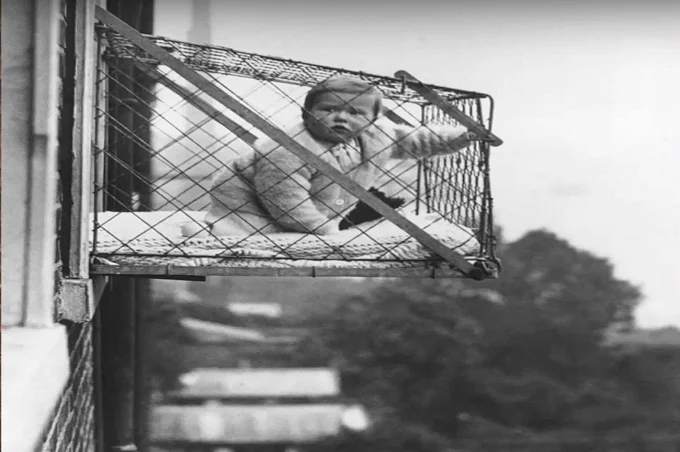7 weird and ridiculous practices that were once considered normal

The phrase “it used to be better” most often does not have a clear argument, except as an attempt to cause nostalgia. The world is changing, and for all its shortcomings, the past was worse, at least in terms of the quality of the same medicine, nutrition, etc.
Today, we can soberly assess the strange and weird and ridiculous practices that were once considered normal. Once upon a time, in the same way, what is familiar to us will cause indignation and thoughts in the style of “how did they even do it?”.
1. Sending children by mail
This does not mean that the children were packed in a box, thrown into a wagon and transported for several days. It was a fairly comfortable way to travel and also very cheap. So, for example, in the United States at the beginning of the 20th century, it cost 15 cents to send a child by mail. In this case, the child went on a journey in a mail car under the supervision of an adult and was delivered to their destination, usually to relatives or to school.
2. Cage for children

At the beginning of the 20th century, they already understood the importance of regular walks of children in the fresh air. However, due to the lack of time for adults and the lack of playgrounds, we had to go-to tricks.
One of the options for being outdoors without adult supervision was a cage that was installed outside the window and allowed the child to walk outside. After a few unfortunate incidents, this practice became a thing of the past.
3. Human zoos

Residents of Western European countries and the United States are very fond of talking about tolerance and equal treatment of everyone, but relatively recently, this was out of the question. Today, even petting zoos with animals are maltreated. Still, less than 100 years ago, there were human zoos where peoples who were backwards in terms of technological development were demonstrated. Usually, they were brought from Africa, simply stealing people from primitive tribes.
To get the latest stories, install our app here
Moreover, this happened relatively recently. For example, at the World Exhibition in Brussels in 1958, a Congolese village was demonstrated – an analogue of a zoo with people from the Congo, which was then a colony of Belgium.
4. Experimental treatments
Today, medicine offers many new, not yet fully understood treatment methods, but it relies on scientific facts and evidence base. However, back in the early 20th century, not to mention the 19th, many practices were far from medicine and were just speculation.
So, for example, sessions of sudden fright were used to treat stuttering, electric shocks were used to treat depression, and the suspension was used to eliminate back problems, which only exacerbated the problem. And we have listed only the most humane methods of “treatment”. Today, when humanity is advancing science in genetic engineering and cybernetics, such experiments look like attempts to put a plug in an outlet and see what happens.
5. Uranium in everyday things

By the middle of the 20th century, people were already aware that uranium and other radioactive components were not particularly beneficial to health. But manufacturers, especially in the West, actively stuffed radioactive substances into various devices, up to children’s toys. It’s so fun that the toy glows or gets a little warm. In the United States, young technician kits were even produced, such as the Gilbert U-238 Atomic Energy Laboratory, which included uranium ore.
Radioactive materials could be found, for example, in wristwatches, flashlights and other everyday items. Only in the second half of the 20th century, with an understanding of what constant exposure, albeit in small doses, could lead to, this practice was banned.
6. Promotion of smoking among pregnant women

Today we know how detrimental the effect smoking has on the development of the fetus. But even 70 years ago, large tobacco factories in the US and Europe actively advertised smoking to pregnant girls as a cure for constipation, which occurs because the fetus presses on the intestines.
As for young mothers, they were also influenced by bright advertising, which said that cigarettes would help to cope with stress after childbirth and get back in shape faster.
To get the latest stories, install our app here
7. Excursions to psychiatric hospitals

Until recently, psychiatric clinics were considered a circus of freaks, where you could come on a tour and laugh at mentally ill people. At the same time, the guests were treated almost like animals, without ceremony and without bothering to communicate with them adequately. Electric shock, fasting, suspension, centrifuge, injections of dangerous and untested substances – all this was a typical treatment for people with a broken mental state.




